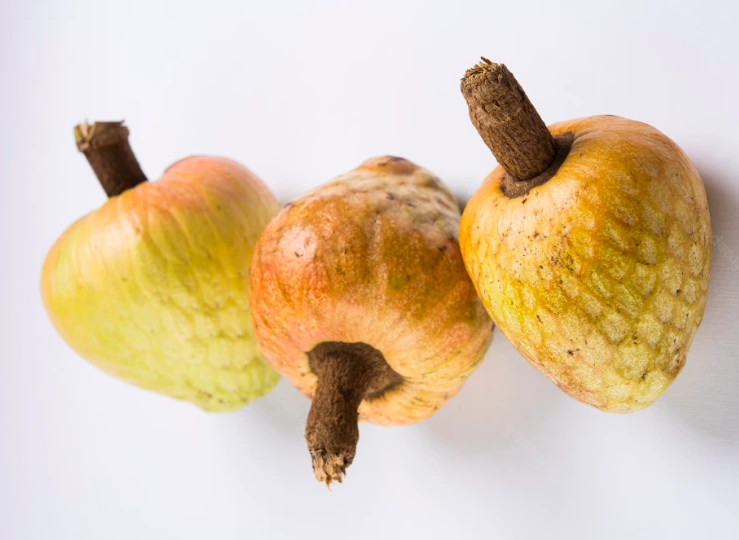The ficus tree, a member of the mulberry family (Moraceae), produces the fruit known as the fig. They have a distinct, sweet flavour, a soft and chewy texture, and are full of edible seeds that are slightly crunchy. Due to their fragility and short shelf life, fresh figs are frequently dried. This results in a dry fruit that is sweet and healthy that you can consume all year long.
Figs and their leaves are rich in nutrients and may provide a number of health advantages. They might help you control your blood sugar levels, encourage healthy digestion, and lower your risk of heart disease.
Uses of Fig
| Type | About |
| Fresh | – On its own, fresh anjeer is a high-fiber, low-calorie snack. – You may also include in salads or desserts. – Fresh figs homemade jams and juices are delicious. |
| Dry Fruit | – Both the calories and sugar content are higher. – Eat on its own or combine with cold desserts like ice cream. – Better than the fresh version for controlling constipation. |
| Leaves | – Eat them in a variety of ways and are edible. – Also functions as a wrap for nutritious fillings. |
| Tea | – You can also steep anjeer leaves in hot water for a delicious, nutty flavour. |
Nutritional value of Fig Dry Fruit
Figs are a naturally occurring source of soluble fibre, sugar, and numerous minerals. They are a top-notch iron source. Figs are a rich source of antioxidants like vitamin A and vitamin K, potassium, calcium, magnesium, and copper, which can improve overall health and wellness.
Interesting fact: It has been found that figs’ high alkalinity can aid in smoking cessation by decreasing a person’s desire to smoke.
A serving of 30 grams of Fig Dry Fruits provides:
- 68 kcal/290 KJ
- 15.9 g carbohydrates
- 3 g fibre
- 1.1 g protein
- 0.5 g fat
- 291 mg potassium
- 75 mg calcium
- 24 mg magnesium
- 1.26 mg iron

Health Benefits of Fig Dry Fruit
Figs may have a variety of health advantages, including improving heart and digestive health and possibly assisting with blood sugar control.
1. Promote digestive health
For gastrointestinal issues like constipation, figs have been used for a very long time as a home remedy or an alternative treatment. They have a high content of soluble fibre, which gives them a natural laxative effect. Thereby relieving the uncomfortable bowel process. To aid in resolving constipation, try eating two to three dry figs on an empty stomach. Additionally, the fibre they offer has prebiotic properties that nourish the gut flora and support a healthy gut environment, both of which improve digestive wellness.
2. Improve heart health
Being rich in potassium and fibre helps the body get rid of extra fat and lowers heart pressure. This can significantly enhance the condition of your heart. In addition to serving these two purposes, figs are a fantastic source of antioxidants, which not only help to lower free radicals but also triglycerides and bad cholesterol. Consequently, strengthening your heart and extending its life.
3. Help manage blood sugar
Fig leaves have bioactive substances in them that can lower blood sugar levels. Your body may be able to use insulin more effectively if fig leaves help to increase insulin sensitivity. However, fig fruits, particularly fig dry fruits, are high in sugar and may temporarily raise blood sugar levels. You should restrict your consumption of fig dry fruits if you have trouble controlling your blood sugar levels.
4. Possess potential anticancer properties
Different bioactive components found in figs can have varying degrees of anticancer effects because they are found in different places throughout the plant. Embrace figs’ inherent goodness and potential anticancer properties by including them in your diet. Human colon cancer, breast cancer, cervical cancer, and liver cancer cells have been shown to be resistant to the antitumor effects of fig leaves and natural latex from fig plants.
5. Aid Weight Loss
Anjeer, which is high in fibre, is a great mid-morning snack, especially for people who are watching their weight. An excellent healthy snack is fig dry fruits. You can keep longer gaps between your two meals by eating two or three fig dry fruits, which will help you feel fuller for longer. Figs are a fruit that is naturally high in dietary fibre and full of with vitamins and minerals. By increasing the nutritional density of your diet, you can help manage your weight.
6. Control Blood Pressure
The sodium (salt) that is present in fast food is consumed in excess by many people. High sodium intakes can result in potassium deficiency. And this imbalance may cause high blood pressure (hypertension). Fresh figs are one example of a food that naturally raises potassium levels in the diet, which helps control blood pressure.
How can you include figs in your diet?
There are numerous ways to incorporate figs into your diet, each with potential advantages. The four main ways to incorporate figs into your diet are as follows:
- Fresh: Fresh figs are a low-calorie, satisfying snack that also tastes great in salads and desserts. You can also make jams with fresh figs.
- Dry fruits: Due to their high sugar and calorie content, fig dry fruits should only be consumed in moderation. They might work better than fresh figs to relieve constipation.
- Fig leaves: Fig leaves have a number of uses and are nutrient-rich. Similar to grape leaves, they are frequently used as a wrap for dishes with rice, meat, or other fillings.

There are many ways to enjoy figs, but due to their high sugar content, fig dry fruits should only be consumed sparingly as a natural remedy for constipation.
Side effects of Fig (Anjeer)
- Figs are sometimes used as a natural remedy for constipation because of their laxative properties. However, the same behaviour could also result in diarrhoea or other digestive problems.
- Due to figs’ high vitamin K content, they might unintentionally interfere with blood thinner medications.
- Anjeer leaf extract may harm the liver when used in high doses, according to a preclinical study.
- Other studies have shown that using fig leaves in excess, results in moderate toxicity.
Before making any dietary changes while taking medication, always consult your GP or a dietician.
The Bottom Line
Figs may offer a number of health advantages. In addition to the fruit, fig leaves and fig leaf tea seem to have health benefits. Particularly fig dry fruits might ease constipation. It is a vibrant fruit that can be eaten raw, cooked, or combine it with your favourite treat. You should only consume this fruit in moderation because if you consume anything in excess, it can be harmful to your health.
Read more:
Kiwi Dry Fruit: Some Amazing Benefits and more
What is Ramphal Fruit? Amazing health benefits of the Fruit
ताड़गोला: अद्भुत लाभ और दुष्प्रभाव: Ice Apple in Hindi





